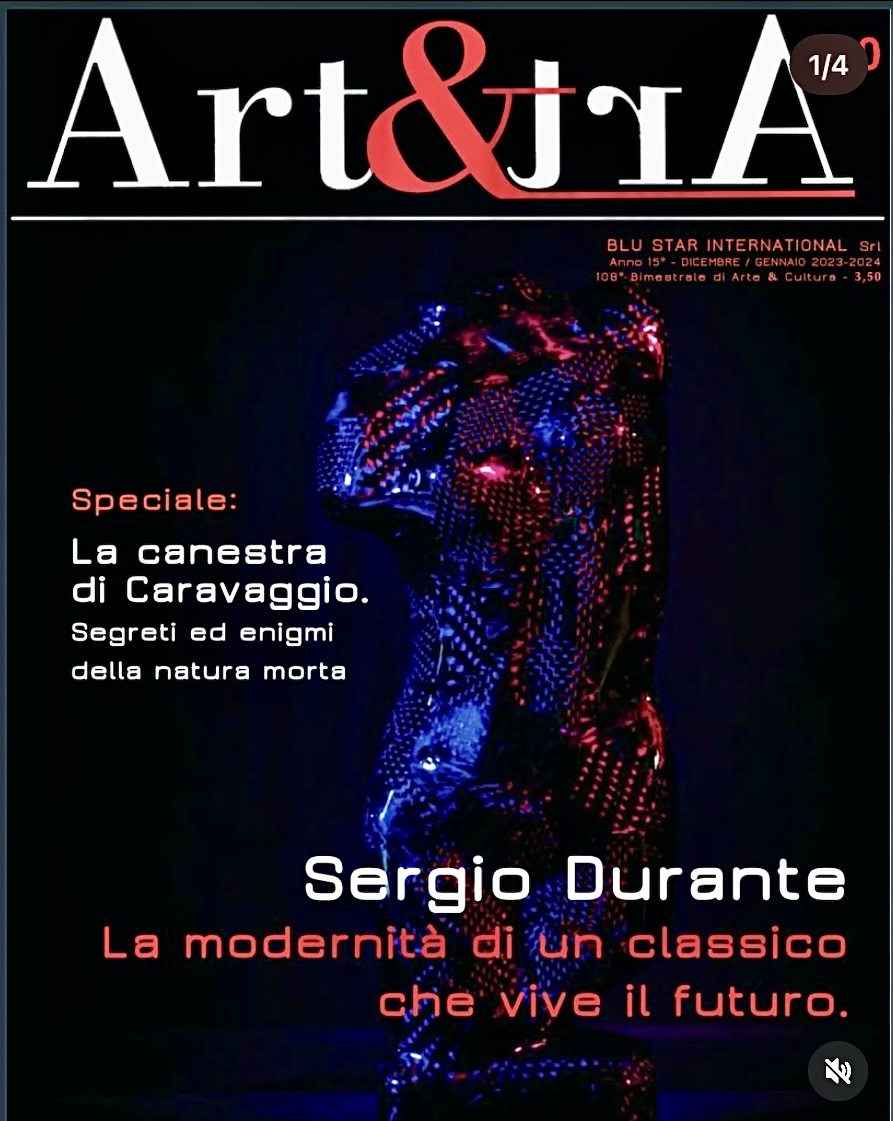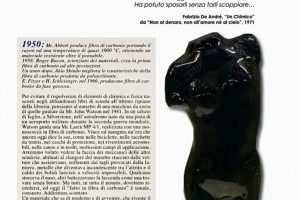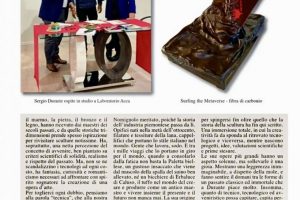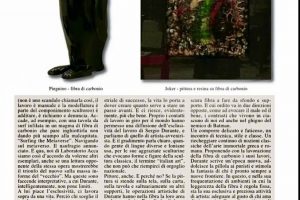Modern Artwork made in Recycled Carbon Fibers
Fine Art Collection
The modernity of a classic who lives the future.
But look at the hydrogen silent in the sea
Look at the oxygen next to her sleeping
Only a law that I can understand
She was able to marry them without making them explode…
Fabrizio De André, “A Chemist”
from “Not to money, not to love nor to heaven”, 1971
15 March 2024
The background
1950: Mr. Abbott produces carbon fiber by bringing rayon to a temperature of almost 1000 °C, obtaining a material resistant beyond belief.
1958: Roger Bacon, materials scientist, creates the first high-performance carbon fiber.
A year later, Akio Shindo improves the characteristics of carbon fiber produced from polyacrylonite.
E. Fitzer and H. Schlesinger, in 1966, produced carbon fiber from the gaseous phase..
The meaning
To avoid dusting off elements of chemistry and physics hidden in the abandoned school books on the top shelf of the bookcase, let’s think about the nose of a racing car of the kind driven by Mr. John Watson in 1981. On a Saturday in July, at Silverstone , in the racetrack created from a runway of a military airport during the Second World War, Watson drives a Mc Laren MP 4/1, made with a carbon fiber monocoque. He wins and inaugurates an era that still speaks volumes about him today, as in bicycles, tennis rackets, protective helmets, aircraft coverings, canoes and in many, many fields of application. We would have liked to see the faces of the mechanics from the other teams, accustomed to the clang of the nose being detached from the cars they were assisting, suffering from the cuts caused by the sheet metal, metal that became incandescent due to the friction and heat of the cars launched at impossible speeds. Some turned up their noses, others christened the matter as a gimmick with no future. But everyone, all over the world, had to change their minds, and today the “made of carbon fiber” is usual, customary. Even discounted.
A material that smells of modernity and of the future, which covers the slender body of fighters launched in the skies of the world, which lightens the structures and offers resistance greater than that of steel. When the carbon fiber racket was proposed to tennis players, the woods of the glorious previous ones sadly went into retirement. The wrist worked free from excessive weight and the ball shot away faster than ever. We leave the details to the technicians, but take that invention as the first data to evaluate the work of an artist who produces contemporary art with carbon fiber: Sergio Durante. He certainly has the notions of a sculptor, or, better, of a modeler who has in his fingertips the ability to feel the material and make it come alive under the command of inspiration and the mind. He has respect for the forms that marble, stone, bronze and wood have received from the masters of past centuries, and he often takes inspiration from the historical three-dimensional ones to revisit well-known sculptures. Above all, he has a clear perception of the concept of the future, well planted on scientific criteria of solidity, realism and respect for the past. But, let the technologists-at-all-costs not be scandalized, he has the imagination, curiosity and romanticism necessary to face the creation of a work of art with a dreamer’s spirit.
….
A delicate and tiring composition, a meeting of technique, style and class. A continuous echo of classical notions of immortal Greek and Roman art. By proposing his works through the processing of carbon fibre, Durante writes a new era, sweetens the pill for purists and stimulates the imagination of those who are always ready for new frontiers. In this, and in his frequenting of environments in which the lightness of the fiber is a fixed rule, lies his exclusive and precious activity as an artist: adapting to the taste of those who love to stand out in their choices all those studies and efforts that have already led him to tops of industrial production for racing cars, airplanes, hulls. He does so without ever forgetting that he is an Italian in the category of Filippo Parodi, a magnificent sculptor in eighteenth-century Genoa, and that of Giovanni Andrea De Ferrari, who with his works made the excessive economic power of the Republic of Genoa resonate. The spirit of the lover of the endless classic is indeed the stimulus that brought Sergio Durante this far, that is, to a very high point in the quality and values of Italian art that travels the world.
Giorgio Barassi
Director of Art & Art Revue – December/January 2023-2024
Art Critic and Anchor man of the ‘Art&Investment’ SKY TV Channel





